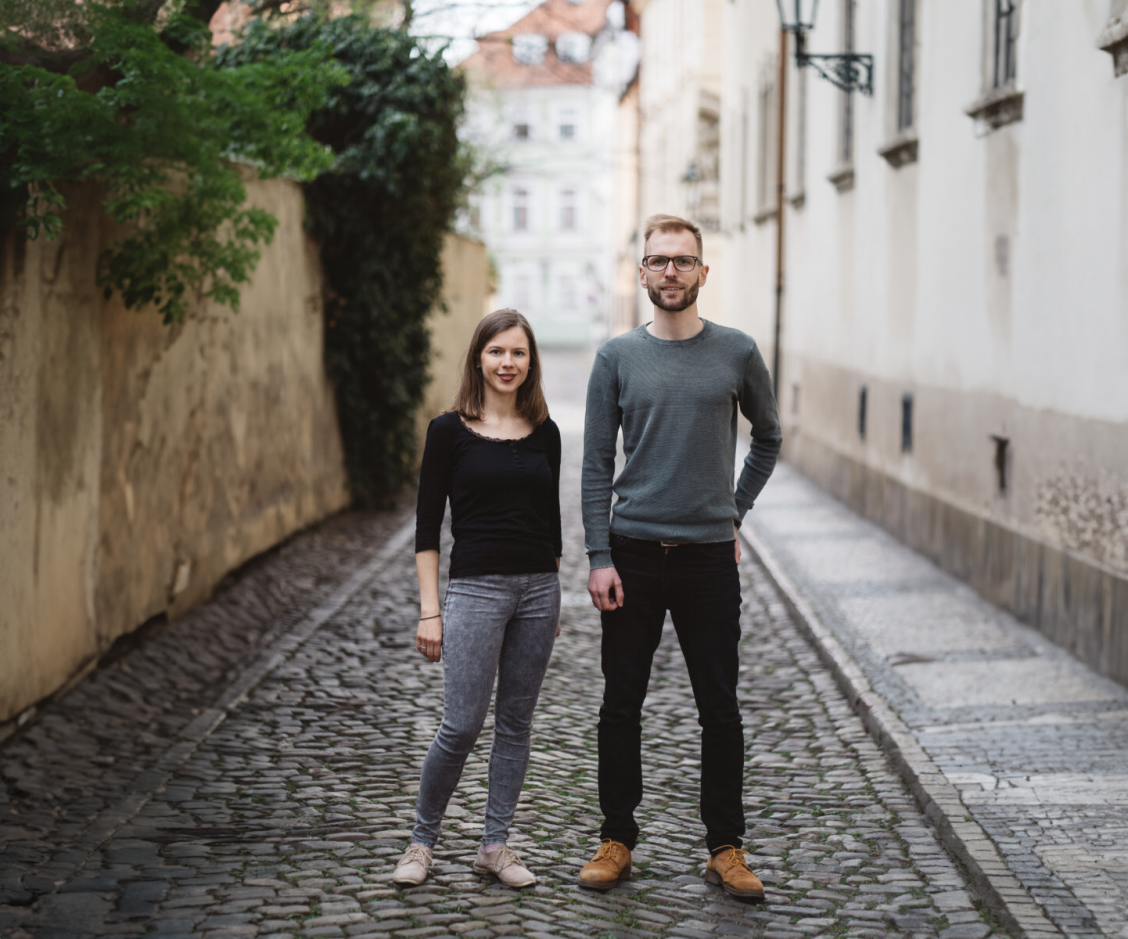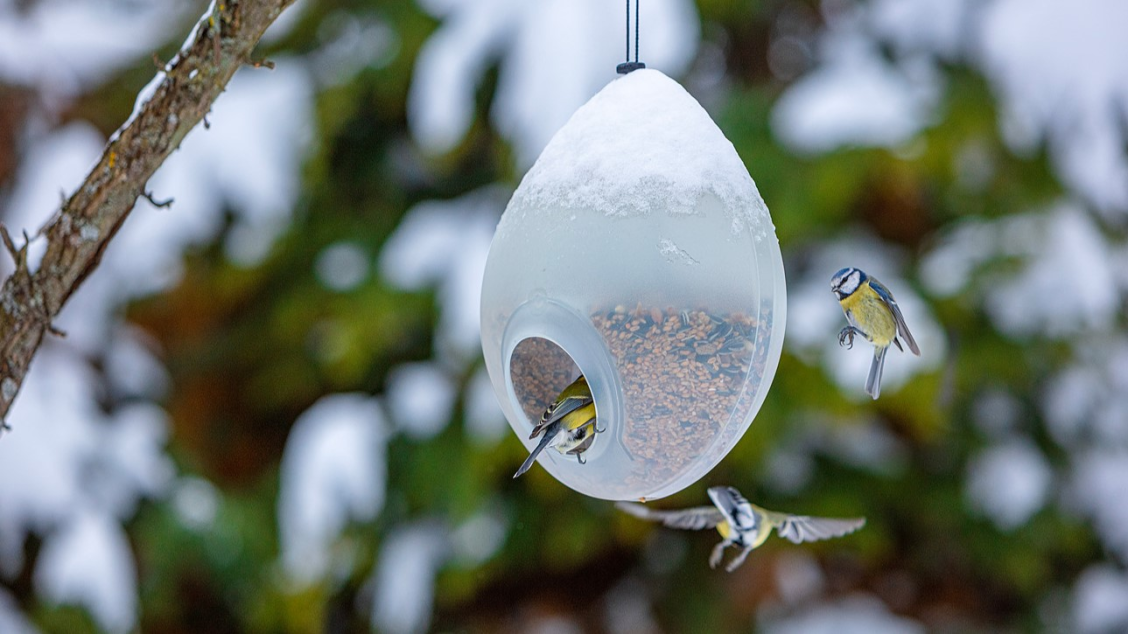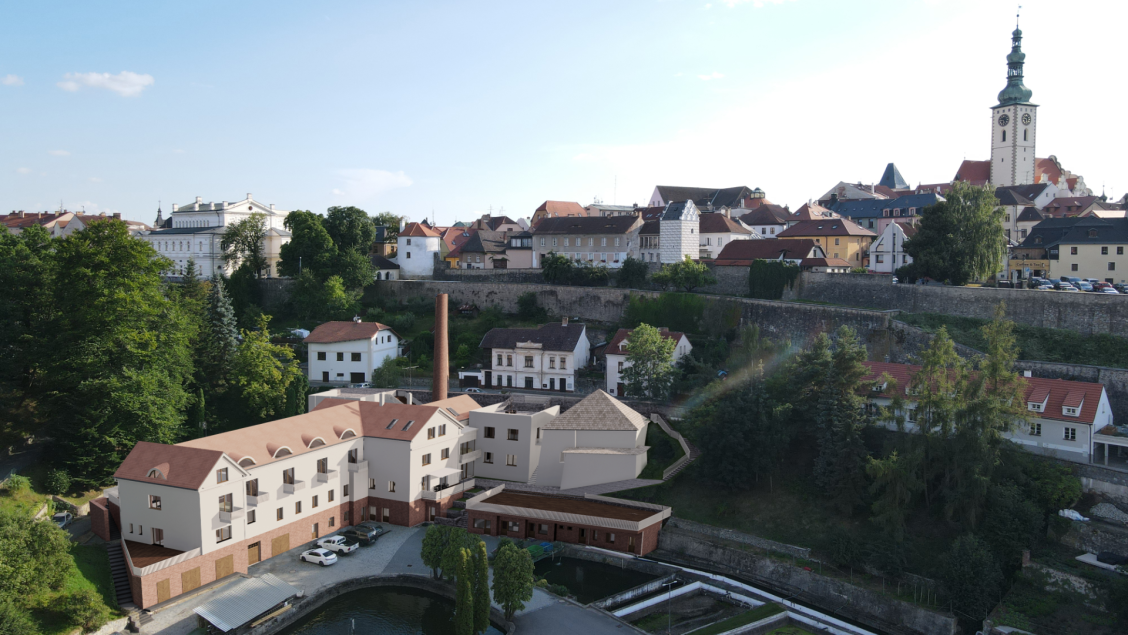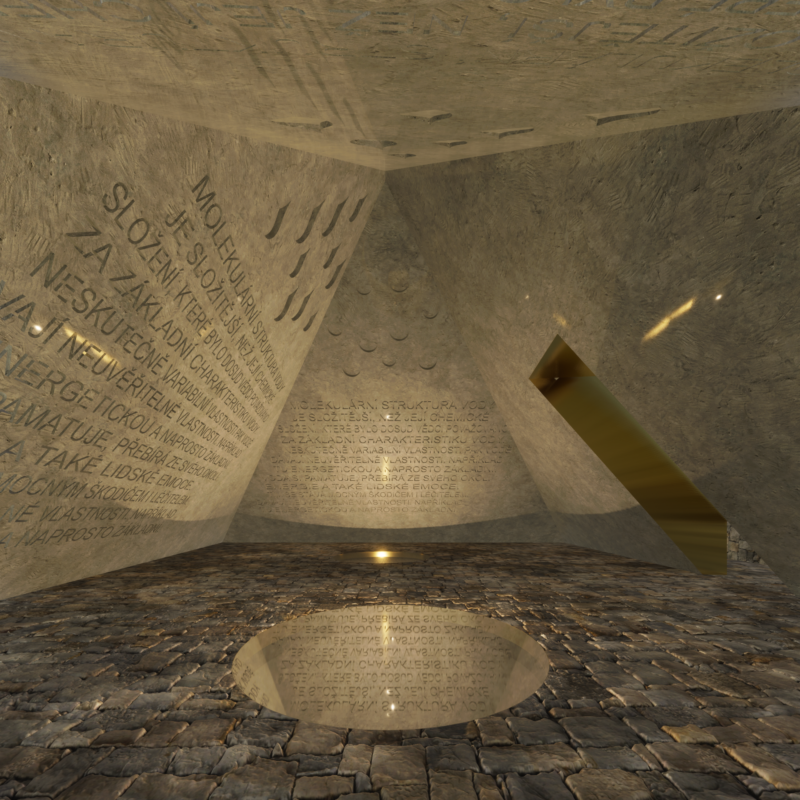"You spend two hours trying to figure out how much dry droppings weigh." Markéta and Ondřej Vápeník from Mnohostěn studio help birds and people
5/4/2024

Did the faculty bring you together?
Ondřejj: We didn't meet at the faculty, although we could have, because we studied there simultaneously for about two and a half years. We met in a pub in Tábor when I was organising a stag party there. We passed about five kilometres of the Lužnice River.
Markéta: I had handed in my bachelor's the day before. I was completely exhausted, came to my parents' place in Tábor for the weekend and went for a beer with a friend. There came about fifteen guys in striped T-shirts, two of them sat down with us and Ondřej started to hit on me.
Ondřej: It was one of my most embarrassing flirting experiences. I think Markéta took away from that evening that I was absolutely horrible.
Markéta: A little bit, but the interesting thing about him was that he's an athlete and he's an architect.
How did your studio Mnohostěn come into being?
Ondřej: We started doing smaller projects together in the evenings and found that it suited us to work together. The right time came when I left my previous job.
Markéta: I kept wanting to go back to Tábor, and then Ondřej eventually did too (laughs).
Ondřej: Because we were often here on weekends and I just fell in love with Tábor. I call it a concentrated city. There's so much energy in a small place, nice public space and good amenities. I don't use public transport, I just walk everywhere.
How does the connection between designer and architect work? Did you understand each other's work right away or did you have to smooth out the areas of friction?
Markéta: In the beginning our work was quite separate, but as we learn from each other, it has become fundamentally intertwined and I think we can both fill in for the other profession. It's still true that Ondřej does more architecture and I do more product, but for example, we are always together for project assignments and all meetings.
Ondřej: We also brainstorm together.
Markéta: Exactly. Because we found that school taught us to think the same way. And it doesn't matter if you're thinking about a house or furniture. But I have to admit that I didn't know how to communicate with the authorities and Ondřej didn't understand all the production technologies.
Ondřej: The software was also different. You're very good at solid stuff and Rhino. On the other hand, you weren't very good with architectural software and BIM. But we're both getting better with time. Architecture is also very individualized, you can help yourself with the context of the place you're designing for. Whereas design prepares for a wide range of uses.

What are you working on at the moment?
Markéta: We have been lucky enough to design garden furniture in cooperation with local steel fabricators and after the success of the plastic feeder for Plastia we are preparing two more products. They are insect houses and now we are making a little bowl ...
Ondřej: For sh*t. (laughs)
Markéta: They're mats for catching droppings under the nests of house martins.
Ondřej: Now imagine we had a two-hour meeting on this.
Markéta: We had to find out how much the dried droppings weigh so we could size the pad. It's important that it can only hold the droppings, but not the jay, which is a predator for the house martin chicks.
What happens at that moment?
Markéta: The whole mat swings under it.
Ondřej: That's what makes plastic unique. Other products you find on the market are mostly made of wood and hard board materials. And the jay has it as a perch and it's going to endanger the whole nest. Our product will be unique in the market. The whole process was initiated by the Czech Ornithological Society, which has had to deal with a number of lawsuits over the last few years where homeowners have removed the nests even though the house martins are protected.
Moreover, with the arrival of insulation and polystyrene facades, the situation for birds is probably much worse.
Markéta: That's why we also suggest a plastic backing that you can simply glue onto the polystyrene facade. Because you can't nail a wooden board to today's façades anymore.
How long has the feeder that started it all been selling successfully?
Markéta: The Berry feeder, which was created as my diploma project at the FA CTU, has been on sale for less than two years. For this feeding season (laughs) a new product was created - a green feeder made of recycled material. It fits 16 PET bottles. We are very happy with the use of recycling.
We often struggle with the fact that plastic scares people unnecessarily. We wouldn't use it where it wouldn't make sense. For example, in bird feeders, the advantage of plastic is its excellent cleanability and less spread of disease among birds.
Do you often encounter the opinion that plastic is harmful, while wood will automatically be environmentally friendly?
Markéta: That's exactly what I'm trying to focus on during my doctorate at the FA, which has now been slowed down a bit by the birth of our daughter. The average user only sees the final product and forms an opinion straight away. But they don't think about the production, the initial raw materials or the disposal of the product the moment it runs out.
I therefore focused on the environmental aspects of product design. Which brings together several disciplines. My supervisor is Professor Vladimír Kočí, who, apart from the FA, works primarily at the University of Science and Technology. He is an expert in life cycle assessment of products, he can compare the environmental impact of different products.

We discussed your design projects. What about the houses?
Ondřej: I've had about 8 years of architectural and design practice in different sized offices. With Luděk Rýzner at OKPLAN and with David Černý at Black n' Arch. During the formation of Mnohostěn we had a few key projects that helped the formation, and now we are currently working on a project for the reconstruction of the pond below the dam of the Jordán reservoir. The investor here produces pike roe and other fish eggs that he ships all over the world. We have prepared the reconstruction of the administrative part and the design of a new building for housing. In addition to the fishponds, there are also the buildings of an old water mill with significantly aged structures, where a water museum will be created. The water used to be not only used for the operation of the baths and later the waterworks, but was also pushed by an ingenious mechanism into the water tower in the old town, from where it flowed into the fountains. We are collaborating with the owners of the local art gallery Okraje on the design of the exhibition.
But the project is also full of technological challenges. The water heat pump heating the entire building is extremely interesting. A huge heat exchanger (about 80 m) will be placed in the canal that feeds the pond. Last week we again went inside a twenty-five metre high industrial chimney which is in a state of disrepair and will be rehabilitated.
Then we are dealing with two more large sports areas. One is the athletics stadium at Děkanka in Prague, which is the home of my former club, Spartak Praha 4, where I competed for 20 years. A new oval with eight lanes and a grandstand. The second is a multifunctional field here in Tábor.

Ondřej, you've settled down in Tábor. But you regularly come to teach at the faculty. What subjects are you in charge of?
I teach Civil Engineering 1 to 4.
These are such unrewarding subjects, young architects don't like them very much.
I go to the students to relax, it recharges me when I'm here drowning in all the approval stamps and statements from the authorities. I know I'm there for them in that moment and I try to get along nicely with them. I was very pleased when I got a good grade in the student survey. I think we are trying to steer the department in the right direction under the leadership of Aleš Marek.
I know that the students are under extreme pressure. In our case, when we consult with them, it is important not to mock them, even if they say the most stupid thing. We try to explain to them in a human way that they won't get anywhere without technology, that they have to understand it. When a client signs a contract with them, they are the ones who will carry it. And the more they understand the other professions, the better the whole thing can turn out because they'll be able to influence it.

The interview was led by Pavel Fuchs.
